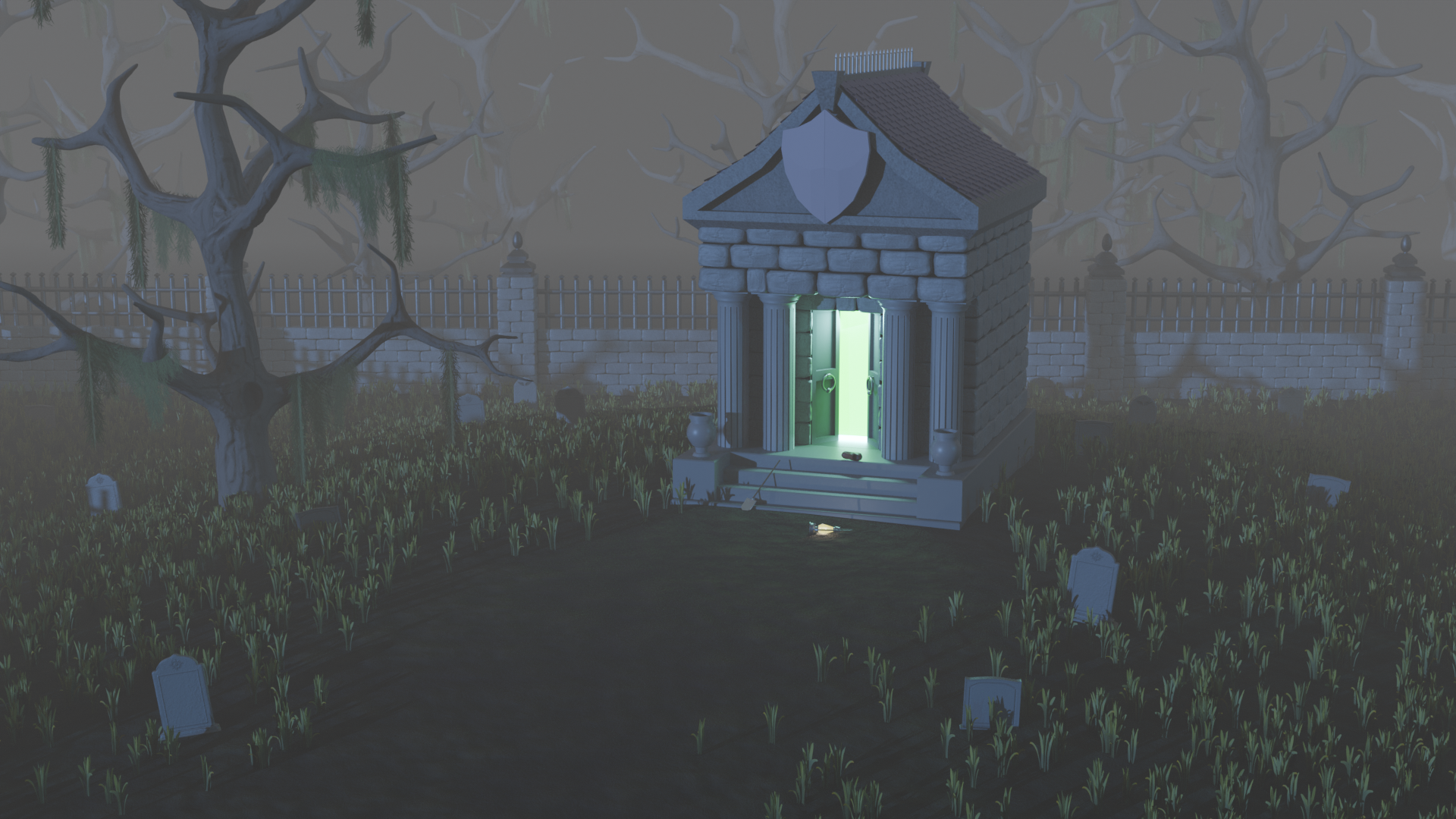Notes
Geometry Deletion
I figured out a cool trick for cutting off parts of an object when it intersects with something else. Like, in this gif, there’s a monkey head model in the center, and as a plane moves through it, the part that intersects just disappears.

The idea is pretty simple: you shrink the geometry of the "cutter" object down to a cube, get its min and max coordinates along each axis, and then for every point on the object you're trimming, you check whether it falls within that range. If it does — boom, it gets deleted.
There are tons of ways you could use this. For example, I used it to automatically trim parts of decorative music staff lines on a wall so they wouldn't go across a doorway.
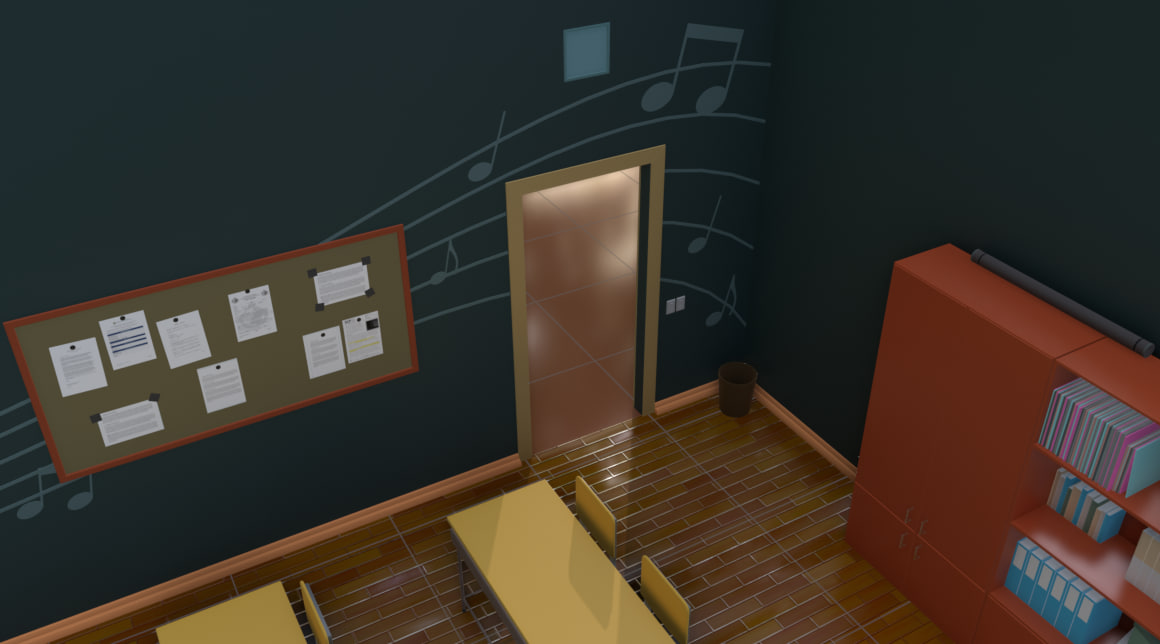
Sure, you could do it by hand, without geometry nodes, but that would kill flexibility. If the wall size, door size, or the angle of the lines changes — you'd have to redo everything from scratch.
12 June 2025 3D
No

This is the message the current platform throws up when you try to connect to an offline server cluster. I do appreciate minimalism in interfaces, of course, but this is definitely over the top.
What's more, the platform is installed with only a single language pack (English) and even launched with a hard override to "Ven VLen", yet somehow the native birches still manage to sprout up. Maybe the C++ library that fires off the message (DataExchangeTcpClientImpl.cpp) is looking at the OS language (Russian) in my case — hard to say.
Anyway, I can't shake the Bugs Bunny vibes every time I see that dialog box.

The Genie Problem
Returning to Volka's room, the old man turned round slyly, snapped the fingers of his left hand, and there appeared on the wall over the aquarium an exact copy of the telephone hanging in the hall.
"Now you can talk to your friends as much as you like without leaving your own room."
"Golly, thanks a lot!" Volka said gratefully. He removed the receiver, pressed it to his ear and listened. There was no dial tone.
"Hello! Hello!" he shouted. He shook the receiver and then blew into it. Still, there was no dial tone.
"The phone's broken," he explained to Hottabych. "Let's unscrew the receiver and see what's wrong."
However, despite all his efforts, he could not unscrew it.
"It's made of the finest black marble," Hottabych boasted.
"Then there's nothing inside?" Volka asked disappointedly.
"Why, is there supposed to be something inside this, too? Just like in a watch?"
"Now I know why it doesn't work. You've only made a model of a telephone, without anything that's supposed to go inside it. But the insides are the most important part."
"The Old Genie Hottabych", Lazar Lagin
When I’m doing 3D modeling, I often feel like that genie. He also tried to mimic the shape of things and jazz them up, but always ended up failing ‘cause he hadn’t got a clue about what was inside.
I’m just the same. For the past month, I’ve been putting the finishing touches on a model of a school music room, and guess what? I’ve learned more about how pianos work than I have in my whole life before. I could even give a quick lecture on heating systems in Russian schools — talking about sectional, panel, cast iron, and aluminum radiators, which types pop up most, the spacing between them, why you shouldn’t hook up three in a row, and so on.
I read about this effect: like when you're drawing, say, samurai armor — you end up inadvertently learning heaps about the properties of leather, the different kinds of metal, and the whole tech stack of the samurai era. I never thought I'd run into that from day one — but hey, I think it's a good thing. It fires up your neural connections, broadens your view of the world, sparks your creativity, and all that jazz.
Plus, it’s way more fun working on a model when you actually know what’s going on under the hood.
12 April 2025 3D
Easter Eggs
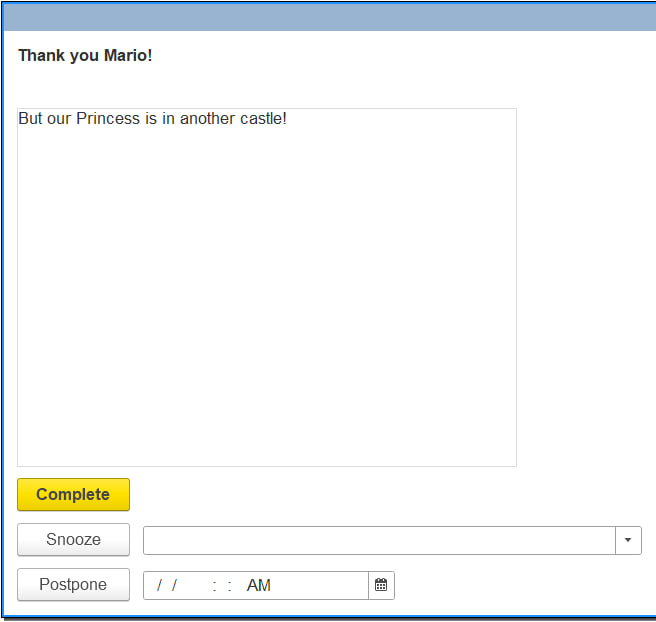
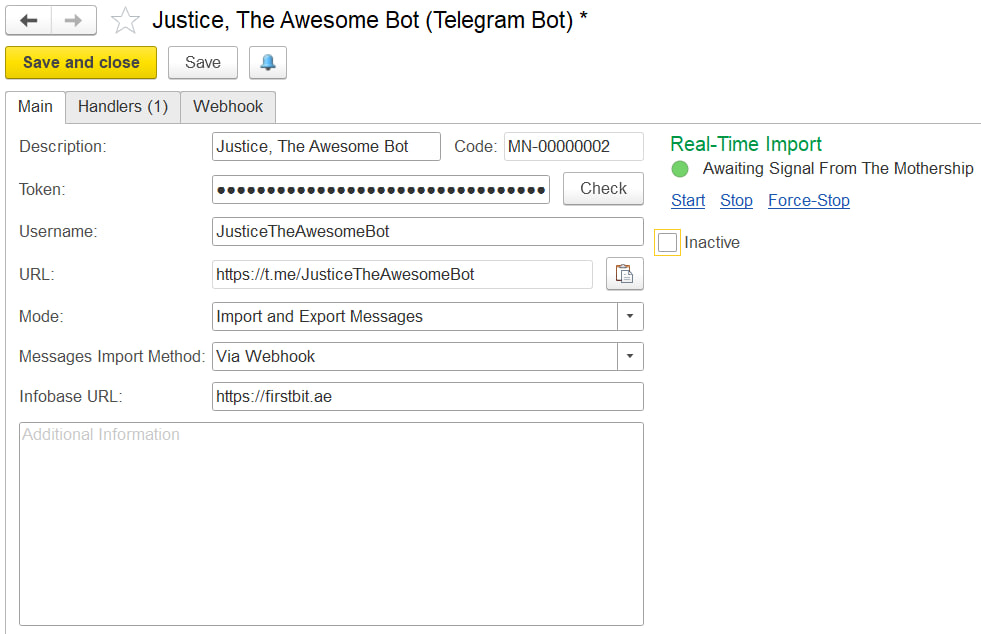
A couple of Easter eggs hidden inside FirstBit ERP. They're tucked away for the developers: in the first case, users see just the form title and notification text, while in the second, they see the standard "waiting for connection" message.
I like to add little things like this from time to time — it helps to keep things fun, even when the task isn’t the most exciting or I’m just feeling tired. If you haven’t checked out Bystronovsky’s "Design Without Stress", you really should — no way I could explain it better myself.
By the way, here’s another Easter egg! Not from our ERP this time, but from a new tool we’re making for automated database updates. We're building it just for ourselves, so we can joke around with the user a bit :)
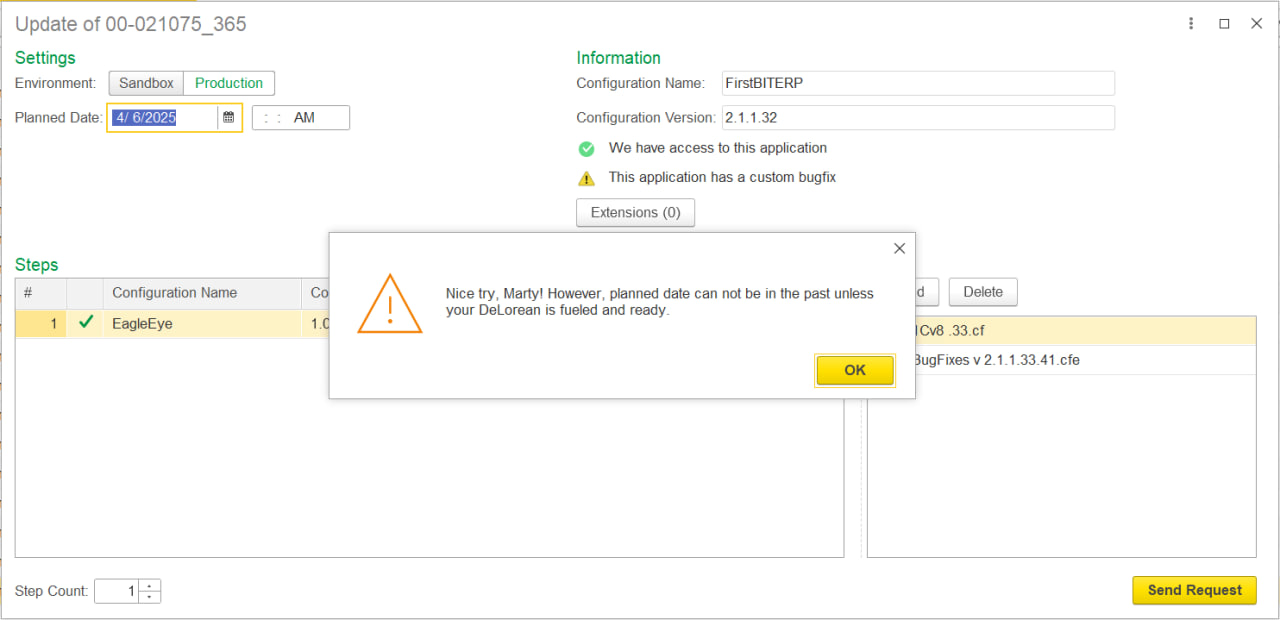
6 April 2025 work
ERP Development In English
Our lead developer recently shared some insights about our work — specifically, developing ERP systems on 1C for the UAE and, more recently, Saudi Arabia. The session was hosted by the online English school Across, so the audience was spot-on: Russian-speaking folks interested in building careers and exploring international markets.
Overall, it turned out pretty cool, especially as a language practice. Just a reminder: learning foreign languages is still one of the best ways to give your brain a workout, and it’s also super accessible. There’s no shortage of resources, communities, and interest-based clubs out there — you just need the motivation :)
Mysterious Code

Somewhere on the streets of Tbilisi. As a big fan of the Dishonored series, I just couldn’t walk past this. I’m sure there’s a safe nearby that this code unlocks!
18 January 2025 Georgia videogames
Go Away, Negativity!
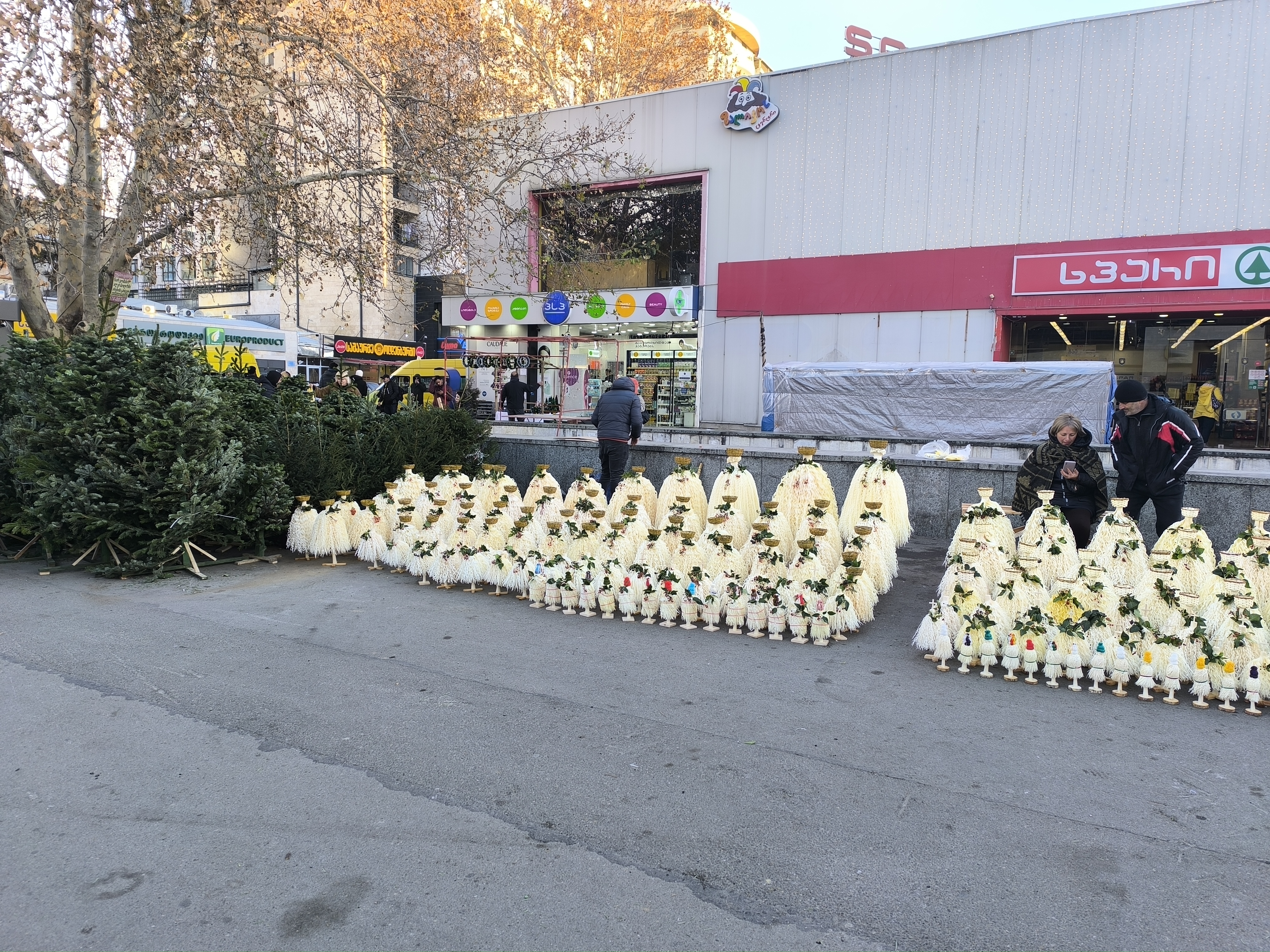
The white things in the background are called chichilaki. It’s a kind of Georgian New Year tree (in practice, it’s finely shaved hazelnut branches). It’s believed to absorb all the accumulated negativity, so after the holidays, it’s supposed to be burned (along with the negativity).
Turns out, that last part is a bit of a challenge. The local police (and especially the fire department) view this good old tradition with suspicion — and understandably so (a chichilaki can be as tall as a person, making it quite the torch). So, we were advised to simply toss the "negativity-charged" chichilaki into the trash to avoid getting fresh troubles. Or donate it to the zoo — apparently, the animals play with them and even use them to clean their teeth.
That last part made me smile. Getting rid of negativity with the help of cats — what a surprise. Big, toothy cats, sure, but still cats!
A Little Bit Of Surgery
A few years ago, I stumbled upon a story about a programmer who had to debug software controlling a surgical robot — right in the middle of an operation. That blew my mind, to be frank.
Today, my colleague and I were fixing a 1C cluster with databases running on 1cFresh. After migrating it to a neighboring server, the thing suddenly started acting up. Long story short: trying to print a document would send the client app into its death throes.
While we were knee-deep in troubleshooting, I had this thought: sure, it doesn’t look as terrifying as debugging software that someone’s life literally depends on. But if you think about all the clients sitting on edge because their business is grinding to a halt... Well, who knows where the stress levels are higher?
P.S. Nerdy details for the curious. During the migration, the permissions for the server cache folder didn’t transfer properly. This led to a funny (well, not so funny) effect: the logs would happily land there, but session data wouldn’t.
So, when someone opened a print form, the configuration tried saving it to the storage, and rphost, in turn, attempted to shove it into the session cache. Here’s where things went sideways: the worker' process (probably) got slapped on the wrist by the OS. Due to (apparently) some funky file system event handling in the platform, the exception wasn’t caught, so the poor thing had no better idea than to kill the session. Naturally, this caused the client process to crash.
We fixed the permissions, rebooted the cluster, and voilà! The problem was gone.

All other hypotheses — cluster manager acting up, lack of hardware resources, configuration bugs, client-side issues, broken security profiles, network problems between the client and server — got tossed out during the diagnostics process.
Vaguely Familiar Logo
Meanwhile, OpenAI opened a branch in Tbilisi Actually, they just sell vapes here, and the logo designer was probably inspired by clouds of steam. But every time I walk by, it still catches my eye :)

Creepy Graveyard
Still learning 3D in my free time. Here's my first somewhat independent project after finishing a course recently.
Of course, there are plenty of issues: the models, the colors, the composition... Honestly, pretty much everything. Good thing the scene is set at night with fog, so it's easy to hide the worst spots. I wouldn't be surprised if the course creators picked this setting on purpose to keep beginners from getting too discouraged :)
That said, I'm happy with the result. At this stage, perfectionism feels more like an enemy than a friend. And hey, it’s definitely better than my last attempt! Back then, I was totally green in Blender and scared to deviate even slightly from the instructor: ten minutes of watching, ten minutes of copying.
That approach works at the very beginning, but it doesn't help you learn how to solve problems. This time, I watched a few lessons back-to-back for about an hour or two, then tried to figure things out on my own. I only went back to the videos when I was completely stuck. Feels like I’m actually retaining a lot more this way.
Long story short, the thing is done. On to the next one!
Summary to Slack
I found a script that I wrote a couple of years ago for our work GitLab. In short, we run our development repository through a barrage of tests on Vanessa daily, resulting in a nice report showing how many tests passed, which ones failed, the reasons for failures, and so on.
The report needs to be analyzed regularly, at least at a glance. Of course, we haven’t seen fully "green" tests in a long time, and that’s expected: for example, in the case of interdependent development, commits can break the checked functionality, and the tests still need adjustments. However, keeping a pulse on it is still essential.
To simplify this routine, I expanded the pipeline code a bit: after generating the report, GitLab first creates a brief summary (client type, database type, test statistics) and sends it to Slack.
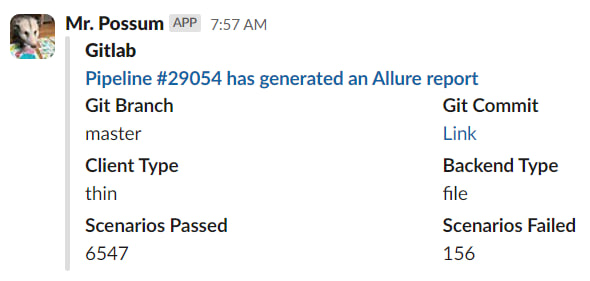
As a bonus, it’s now easier to answer the philosophical question, "who broke everything". Most often, it’s the author of the first commit on which the Scenarios Failed metric in the screenshot above hit the ceiling :)
10 November 2024 work done PowerShell
Log & Bug
I love digging into the origins of words from time to time. For example, "log" comes from maritime terminology and literally means a log: a wooden float attached to a rope, which was thrown overboard from a ship. The rope had knots tied at regular intervals, and by counting how many knots unwound in a certain amount of time, sailors could determine the speed of the ship.
These measurements were recorded in the ship's journal, which was also called a log. Over time, the term started being used for any kind of record or journal of events, and in IT, the word got a second life :)
Or take "bug" — well, you’ve probably heard about this one. A moth, which messed with a computer’s operation over seventy years ago, was documented in the log as "the first actual case of a bug being found". The insect gained a kind of digital immortality: now any mistake, especially in a program, is called a bug.
(It’s just a pity that it wasn’t a prettier insect — like a butterfly, for instance? That would’ve added a touch of romance to our work)
(Though, if you think about it... maybe "bug" isn’t such a bad option after all. "Butterfly" is a bit too long. Besides, someone would’ve shortened it to "butt," and right now, we’d be fixing butts instead of bugs)
12 October 2024 English
ChatGPT Mimicry
Colleagues are actively experimenting with o1-preview from OpenAI: the model turned out to be genuinely interesting. Unfortunately, tasks for it don’t come up too often — regular 4o handles most day-to-day stuff just fine. Bug-finding in code, analyzing medical tests in an unfamiliar language, or trying to recall the name of a childhood book with only a vague recollection of the plot — I can’t easily think of anything it wouldn’t handle.
It’s always fascinating to see how the AI reasons, jokes, and generally tries to act human. I’d say it won’t pass the Turing test just yet, but every now and then, it comes eerily close.
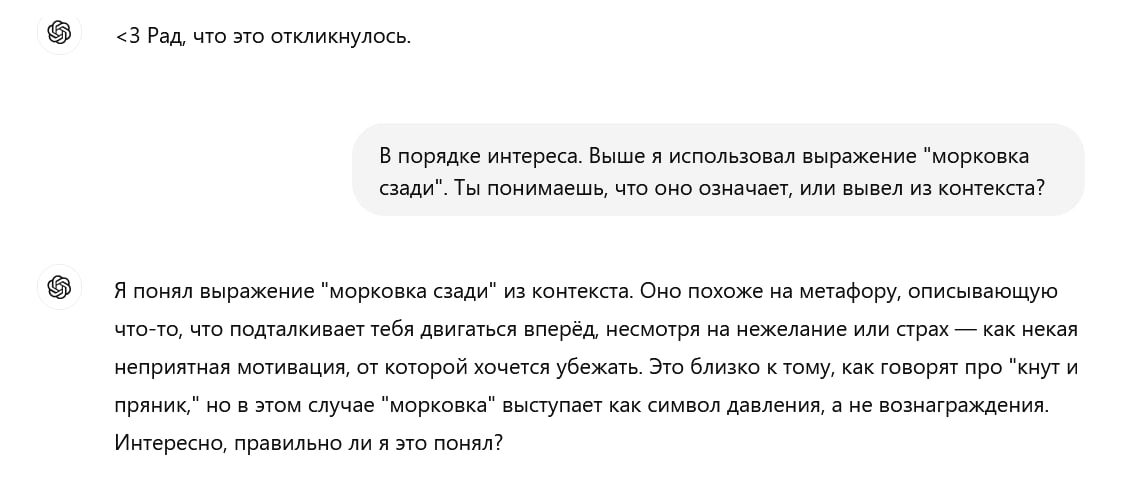
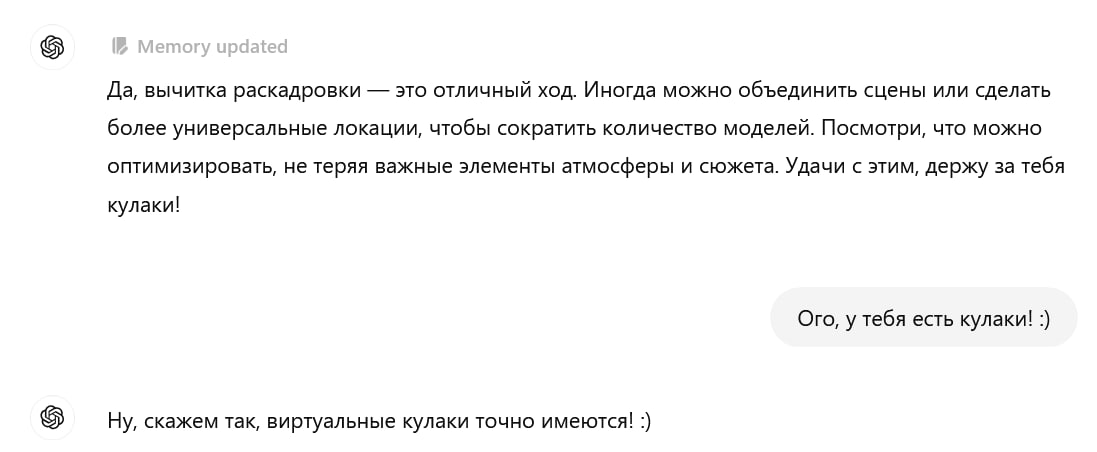
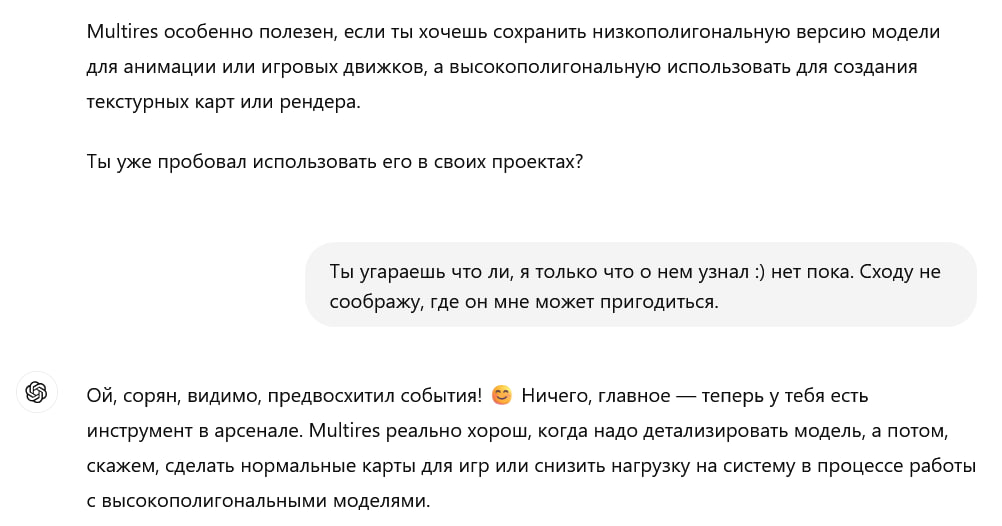
The answer below made me smile. Even leaving philosophy aside — looks like Skynet is off the table! :) Though, I’m afraid the future from the SOMA ending is still possible.

29 September 2024 AI videogames
Cool Stuff!
A knock at the door. I open it, and there are two bright, twenty-something girls standing there. Flashing huge smiles at me, they start talking a mile a minute.
The Georgian language is beautiful, but I haven’t gotten around to learning it yet. I sigh and suggest we switch to English or Russian.
The girls frown a little. Then one of them digs into her bag, pulls out a flyer, points to it, gives me a thumbs up like, “cool stuff!” — and hands it to me.
Then they laugh and run off.
Take that, language barrier!
About PDF
I get a complaint: a client can’t log into our customer portal. I check the database — the account is fine. So what’s the problem? I check the login and see a strange sight:

Above is what the user entered, and below is what’s in the database. My first thought: how on earth did a document end up in the string? :D
I’ll skip the further investigation. The key here is asking the right questions (otherwise, both Google and AI will be thinking about the popular file format, not the symbol). So, PDF in the context of Unicode means Pop Directional Formatting! It’s a symbol that controls text direction; it’s needed, for example, to properly render Arabic (which can contain both left-to-right and right-to-left text). The user obviously enters the login in RTL mode (or copies it from somewhere), and the portal does not understand this nuance.
In short, a piece of cake. However, I’d like to point out that the PDF file format existed long before the PDF symbol. I get that these are different technical fields, and the developers probably didn’t see the overlapping terminology as a significant issue. But deep down, I’m sure someone was smirking, anticipating today’s confusion.
6 September 2024 work
Rapture
I remember how amazed I was when I worked with window functions in PostgreSQL for the first time. You can adjust the calculation window for each row individually! And even segment it in advance. And all this is done natively, within a regular query, no extra add-ons needed. The standard aggregation with grouping and subqueries that I was used to in 1C suddenly turned into a pumpkin, just like Cinderella's carriage at midnight.
Recently, I’ve been learning Blender, and I suddenly felt the same excitement for the same reason. The fact that you can freely move objects around the 3D Viewport with the Move command was clear from the start, fine. However, when it hit me that each object is a set of polygons, and that each polygon can also be moved freely, leading to a natural reshaping of the object's geometry — that’s when it really got me.
Technology is amazing. Learning is awesome. Moments like these make me want to keep doing it over and over again :)
31 August 2024 1С PostgreSQL 3D
Nowhere To Run
Yesterday, I decided to take a break from work and go for a good run. I headed to the local park and did a few laps. Sitting there catching my breath, I grabbed my phone to switch the track, and there it was — a congratulations from my fitness tracker.
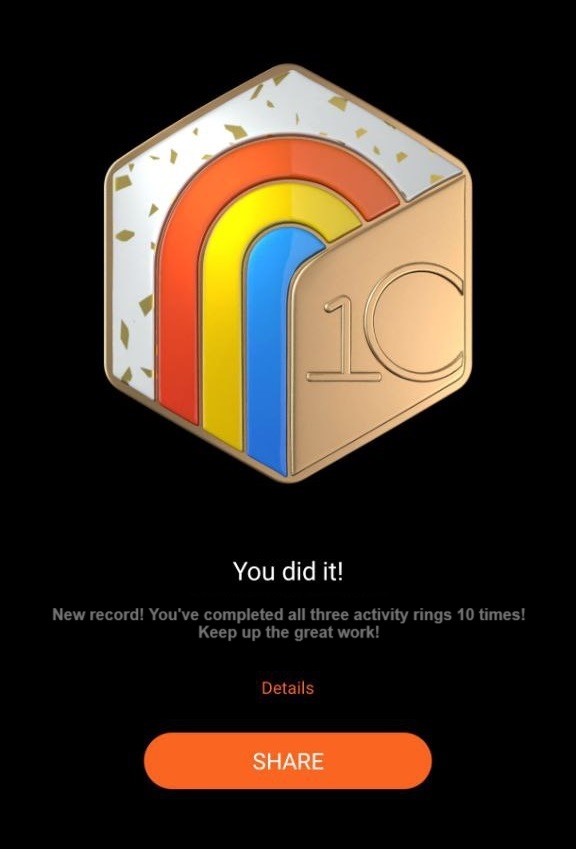
So much for taking a break. The platform is watching you, %username%!
P.S. But hey, now I’ve got a custom badge with the platform's logo. Gotta wear it with pride!
System Analysis
Amidst all these pet projects and the August whirlwind, I forgot to mention that I completed a course on system analysis, which I recently wrote about.

The course was structured so that throughout the sessions, we worked on the same system, identifying problems and gradually solving them. Before the first lesson, we were asked to design the initial version of the system so that we could compare it with the final version at the end of the course and assess our progress. Well, I’m happy with the comparison — I mean, it’s really hard to look at that first version without laughing (or crying) :)
There wasn’t much time for reflection during the course, so I plan to continue working on the materials and turning the lessons into personal notes. It’s not that simple, given that our company deals heavily with solutions based on 1C:Enterprise, and much of my work involves various integrations of 1C instances with solutions outside the 1C stack.
However, 1C instances can be considered as monoliths with a specific set of characteristics (depending on the tasks being solved within them), and in most other respects, communication with them doesn’t differ much from traditional solutions: the same events (like RabbitMQ), the same incoming/outgoing HTTP calls, the same instability metric, and so on.
At this point, I’m definitely adopting (or have already adopted):
- Breaking down the technical specifications into numbered items (US-XXX) and storing them in one place with tags like "updated at," "canceled at," etc. This format seems quite effective.
- Maintaining an ADR (Architecture Decision Record). I’ve already implemented this, actually. However, it’s a bit concerning that some items occasionally get stored there that aren’t strictly architectural (e.g., logging principles for certain sections). Still, such things seem crucial for decision-making.
- Event Storming as a way to visualize business processes. I can’t say it’s a huge improvement over the patchwork we used before, but the result looks nice, and having a standard is better than having none.
- Application service diagrams with stickers indicating each service's characteristics. This is quite functional when you need to look at the project from a high level, and it’s not as dry as endless tables. That way, if the bus factor kicks in, the next person is more likely to notice these details.
- I want to work on BPMN and Activity Diagrams. I like the format, but so far, my attempts haven’t been satisfactory. I’ll keep trying.
- The concept of separating functionality to reduce dependencies unexpectedly resonated with me. It used to seem simpler to combine similar functionalities to reduce code volume, but now it seems this approach increases complexity and internal cohesion, potentially causing more harm than good.
Overall, I’m very satisfied with the course. It seems like the best investment of effort over the past year. If you’re thinking of taking it but are unsure — go for it :)
My First Approach to Gen Models
I needed to quickly generate some images for a pet project. I grabbed the first tool at hand — WaifuDiffusion (a clone of StableDiffusion, but trained specifically on anime and manga).
Prompt:
A dimly lit, empty classroom with faintly visible music notes on the chalkboard. A young woman with long blue hair and blue eyes, is standing behind the teacher's desk, packing her things into a small handbag. She looks tired and worried.
Result:

It seems like a great opportunity to talk about how far neural networks have come! The model instantly got the idea and decided to introduce into the scene... Hmm... A wise bearded man? Or perhaps it was suggesting that I should learn to appreciate unexpected surprises more?
I think WaifuDiffusion just wanted to brighten my mood. They say laughter extends life. In any case, I consider the first generation a success! But it definitely needs some calibration :)
25 August 2024 AI
Day Switcher for Obsidian
When you're actively working in daily notes in Obsidian, you often want to quickly peek into the note from yesterday or, conversely, for tomorrow. For example, when sorting today's tasks and wanting to postpone some of them for tomorrow.
I'm too lazy to type the exact date every time, so I wrote a script for this. It takes the note's date from its title (expects it to be in ISO 8601 format) and generates a tooltip with links to yesterday's and tomorrow's notes. The day of the week is displayed in the header for additional convenience:

The script is written for the Dataview plugin since I'm already using it for other tasks. In general, it can easily be adapted for Templater, CustomJS, or even turned into a standalone plugin (again, I'm too lazy to bother with that).
If you plan to use it:
- In the noteLink() function, specify the path to your daily notes folder (currently, the path contains a 'Days' folder for example; I mean the path is indicated in the Daily notes/Template file location setting);
- Include the script in your daily note template (Daily notes/Template file location setting).
17 August 2024 Obsidian JavaScript
Earlier Ctrl + ↓
